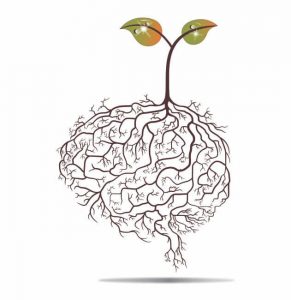- +27 (0)21 848 9434
- marketing@ecosoil.co.za
- Mon - Fri: 8:00 - 16:30
PLANT INTELLIGENCE
The new scientific view is that plants are dynamic, intelligent and highly sensitive organisms. They are capable of accurately computing their circumstances, using sophisticated cost-benefit analysis and taking defined actions to mitigate and control their environmental conditions.
Some examples of this include:
- Humans have five basic senses, but scientists have discovered that plants have at least 15 different senses used to monitor complex conditions in their environment such as humidity, gravity and electromagnetic fields.
- Plants are capable of a refined recognition of self and non-self and this leads to territorial behaviour – if siblings of the plant are growing alongside them, the adult will grow their roots more downward and the siblings will be taller as a result, whereas if alien plants are living beside them, they will grow their roots outward and the alien plants will be shorter and grow less.
- Plants have developed a very robust communication, signalling and information-processing apparatus. Besides abundant interactions with the environment, plants communicate and interact with other living systems such as other plants, fungi, nematodes, bacteria, viruses, insects, and predatory animals.
- Roots also form close associations with fungi. This creates a sophisticated root/fungus communal network, similar to the internet network, that can extend over vast distances. This connects all the plants in a particular ecosystem into one self-organized whole that, by itself, possesses capacities not perceivable in any of the parts. If plants in the system detect that another plant in the mycelial network is ill, unique compounds are intelligently generated by the plants most able to do so and sent through the mycelial network to where they are needed.

Plants are as intelligent and sophisticated in behaviour as animals but their potential has been masked because it operates on time scales many orders of magnitude longer than animals do. Plants, in fact, possess a highly sophisticated neural system and while it does not look like our brain, it really is, in actuality, a “brain”.
In short, plants possess a highly developed, conscious root “brain” that works much as ours does to analyse incoming data and generate sophisticated responses. This is located at the root apex of every root hair which acts as a neuronal organ in the root system.
The numerous root apices act as one whole, synchronized, self-organized system, much as the neurons in our brains do. Our brain matter is, in fact, merely the soil that contains the neural net we use to process and store information. Plants consciously use the soil itself to house their neuronal nets. This allows the root system to continue to expand outward, adding new neural extensions for as long as the plant grows.
There are many documentaries on the internet in this regard. Please refrain from watching “The Secret Life of Plants” since it contains material since refuted. Recommended are these two short TEDx videos in this regard:
PRACTICAL IMPLICATIONS
Watching these videos, there is no doubt that plants are much more intelligent than what was previously thought. If we see the soil as the grey matter of the plant’s “brain”, it follows that we need to treat soil as an important living organism that determines the wellbeing of plants.
Compare a compacted, diseased soil with low organic matter with a well aerated, loose and healthy soil with ample organic matter. In the first case, the root volume will be much smaller with fewer root apices (“brains”) and will be prone to attack by pathogens. It is therefore not difficult to understand that soil fertility directly impacts plant health and therefore production.
